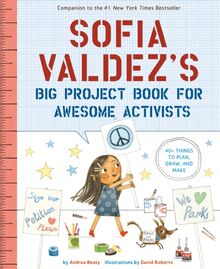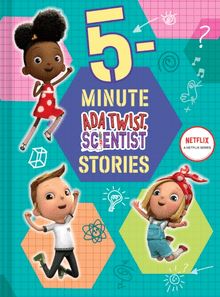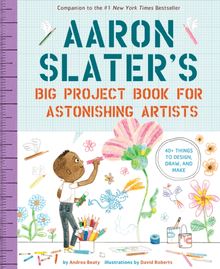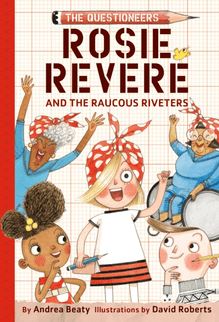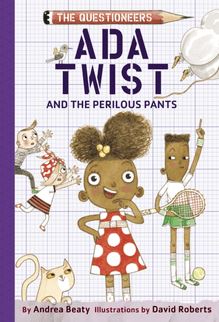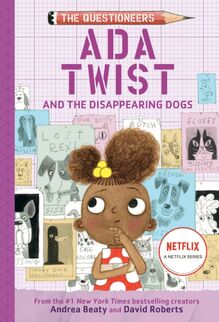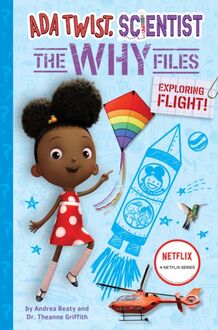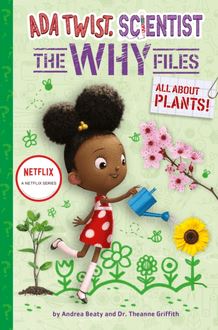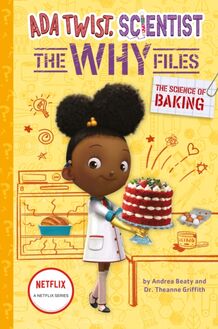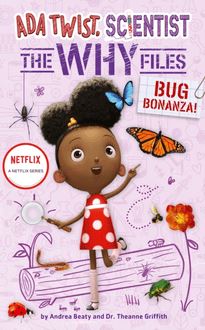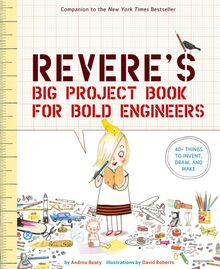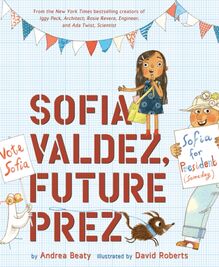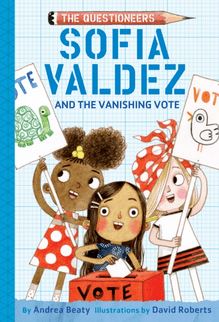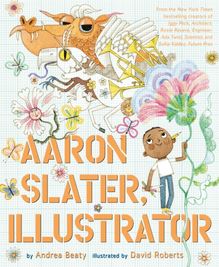-
 Univers
Univers
-
 Ebooks
Ebooks
-
 Livres audio
Livres audio
-
 Presse
Presse
-
 Podcasts
Podcasts
-
 BD
BD
-
 Documents
Documents
-
- Cours
- Révisions
- Ressources pédagogiques
- Sciences de l’éducation
- Manuels scolaires
- Langues
- Travaux de classe
- Annales de BEP
- Etudes supérieures
- Maternelle et primaire
- Fiches de lecture
- Orientation scolaire
- Méthodologie
- Corrigés de devoir
- Annales d’examens et concours
- Annales du bac
- Annales du brevet
- Rapports de stage
La lecture à portée de main
Vous pourrez modifier la taille du texte de cet ouvrage
Découvre YouScribe en t'inscrivant gratuitement
Je m'inscrisAaron Slater's Big Project Book for Astonishing Artists , livre ebook
Découvre YouScribe en t'inscrivant gratuitement
Je m'inscrisEn savoir plus
Vous pourrez modifier la taille du texte de cet ouvrage
En savoir plus

Description
Informations
| Publié par | ABRAMS BOOKS |
| Date de parution | 25 octobre 2022 |
| Nombre de lectures | 0 |
| EAN13 | 9781647008574 |
| Langue | English |
| Poids de l'ouvrage | 10 Mo |
Informations légales : prix de location à la page 0,0550€. Cette information est donnée uniquement à titre indicatif conformément à la législation en vigueur.
Extrait
aaron
slater s
Big Project Book for
Astonishing artists
by
Andrea Beaty
illustrations by
David Roberts
Abrams Books for Young Readers
New York
What is art? What is it for?
It helps us tell tales and a little bit more.
It s made of our dreams and of things that we know.
It tells where we ve been and where we might go.
Art shows us the world in a whole new way
and shares with the world what we have to say.
a
a
r
on
s
l
a
t
e
r
S
E
A
L
O
F
A
P
P
R
O
V
A
L
A note about the type: This book uses the Dyslexie font, which is specially designed for people with dyslexia.
Library of Congress Control Number 2022932524
ISBN 978-1-4197-5397-8
eISBN 978-1-64700-857-4
Text 2022 Andrea Beaty
Illustrations 2022 David Roberts
Additional illustrations by Stephanie Stillwell
Book design by Melissa Jane Barrett
For image credits, please see page 94 .
Published in 2022 by Abrams Books for Young Readers, an imprint of ABRAMS. All rights reserved.
No portion of this book may be reproduced, stored in a retrieval system, or transmitted in any form
or by any means, mechanical, electronic, photocopying, recording, or otherwise, without written
permission from the publisher.
Abrams Books for Young Readers are available at special discounts when purchased in quantity for
premiums and promotions as well as fundraising or educational use. Special editions can also be
created to specification. For details, contact specialsales@abramsbooks.com or the address below.
Abrams
is a registered trademark of Harry N. Abrams, Inc.
ABRAMS The Art of Books 195 Broadway, New York, NY 10007 abramsbooks.com
1
World's greatest artist
Draw a picture of yourself on a sheet of paper!
Self-portrait of the artist
as a young person
Your art is unique and wonderful, just like you. This book can help you
learn more about art and how to create it. Have fun exploring new ideas
and learning about other artists who have done amazing things.
Making art helps you understand yourself and the world better. That s
important. The more you understand the world, the more you can help
make it a better place.
You can share your creations with others or keep this project
book all to yourself. You decide.
This book is for YOU!
S
e
e
p
a
g
e
8
9
f
o
r
i
n
s
t
r
u
c
t
i
o
n
s
.
2
Each evening, baby Aaron listened to the laughter and music
that filled the family garden.
As he grew, he planted flowers and drew on the garden
stones with chalk. Above all, he loved listening to books
in the old garden swing. The stories were exciting and
beautiful. Aaron wanted to write stories more than
anything else in the whole wide world.
But before he could write, Aaron needed to read.
That was very hard for Aaron. Even with help, he
just couldn t get it. The words were squiggly and
hard to recognize. Aaron was frustrated. Maybe
when he got to school, he would learn to read.
Until then, he spent his time drawing wonderful
pictures in the garden.
THE STORY OF
aaron slater, illustrator
At last, Aaron was old enough for school! On the very first
day, he wore his poppy-red jacket and his sunflower-yellow
socks. He took his red lunchbox and a bunch of flowers for
his teacher. He was sure he would figure out how to read and
write by the end of the first day.
That did not happen. Aaron worked hard that day and that
week and that year, but he still could not read.
Would he ever figure it out like his
friends? Aaron didn t want to be
different. He wanted to be good at
reading, too. He wanted to stand
out and show people what he had
to say. Aaron didn t know how to
do that, and it made him sad.
Eventually, he stopped trying to stand
out. Instead, he tried to blend in. He even
stopped wearing his red jacket. If no one
noticed him, he thought, they could not
see him struggle.
At first, it worked. Aaron s second-grade teacher, Miss Lila Greer, was brand-new to
teaching and though she was very smart and kind, she was a little overwhelmed. There
was so much going on in class! However, she quickly found her way and was ready to
help her students. First, she wanted to know what they could do.
Class! she said. I have an assignment for you. Write me a story. Write something
true!
Oh no!
thought Aaron.
It was the moment he d dreaded. How could he
write a story? If he failed, Miss Greer and
everyone would know that he could not read.
4
That night, Aaron tried and tried to write a story. But by morning, all he had was a
mountain of crumpled papers. He dragged himself to school and waited for his turn.
At last, Miss Greer called his name and Aaron stood up. He was so nervous that his
hands shook. He looked at his paper, but there were no words to read. There was only
a picture of a red flower.
The class and Miss Greer looked at him. That made him even more nervous. He didn t
have a story to read. What could he do?
Maybe he could make up a story! Aaron took a deep breath and closed his eyes.
Once . . . he said. . . . um . . .
He didn t know what to say next. Then he thought about the beautiful flower he had
drawn, and he knew what to say.
Once, he said, there was a magical flower . . .
That was the beginning of Aaron s story of a magical
flower and a brave but imperfect hero who battled
dragons. In the end, the hero learned that strength
comes from the heart and not magical flowers. That
beauty and kindness and loving and art give courage
to all with a welcoming heart.
5
At the end of the story, the flower died. The children
gasped, and Miss Lila Greer cried. The story had
touched her heart. Even without writing words, Aaron
had done exactly the thing she had asked. He had
written a story with his art.
Aaron saw her tears and did not understand. He blinked back
his own tears and ran to the hall. He thought he had failed.
Aaron had not failed. He was an artist and his story held truth
that touched all who heard it. Miss Greer found Aaron in the
gray hallway. As she looked at him, her heart filled with joy.
Thank you, Aaron, she whispered.
She left Aaron to think. And he did. Aaron realized that his art had power. It was
unique and wonderful. Just like him. He could use art to tell stories. To tell the world
who he was.
After that, Aaron kept working on reading and writing. And drawing. Miss Greer,
Aaron s family and friends, and everyone at the school did their part to help.
Aaron helped them by sharing his art. He painted a
mural in the hallway and his friends and Miss Greer
helped fill it with books, music, and art. There were
even dragons! Together, they made a place full of story
and beauty for one and all. It was the Illustrator s
Garden at the end of the hall.
6
Learning to read is hard for Aaron Slater. His brain has difficulty identifying how
speech sounds relate to letters and words. Aaron has dyslexia, just like fifteen to
twenty percent of all people. There are many other learning difficulties people may
have. For instance, dysgraphia is difficulty learning to write. Dyscalculia is a form of
difficulty doing math. Some people have difficulty controlling where their attention
goes, which is called attention deficit disorder (ADD) or attention deficit hyperactivity
disorder (ADHD). These learning problems are not about a person s intelligence,
creativity, kindness, willingness to work, or their awesomeness. They are just about
how the person s brain works. All of these difficulties (and many others) can be
frustrating, but tools and special instruction from educators and others can help.
Aaron s dyslexia informs who he is, but it does not define who he is. We each have our
own superpowers and struggles. That s what makes us unique, beautiful, strong, and
important to the world. Just like Aaron.
7
aaron douglas
Aaron s moms named him after their
favorite artist. Aaron Douglas was an
African American painter, muralist,
and graphic artist who lived from 1899
to 1979. He was a key figure in the
Harlem Renaissance, an important
literary and artistic movement of the
1920s and 30s. It was an explosion
of African American arts and culture
centered in the Harlem neighborhood of
New York City when many of America s
great artists, thinkers, musicians, and
activists came together, including
poets like Langston Hughes and Zora
Neale Hurston and musicians such as
Louis Armstrong and Bessie Smith.
Douglas s art was influenced by
African art, Art Deco, and jazz and
reflected African American life and
struggles. Jazz instruments, such
as trombones and trumpets, appear
in many of his works. Learn more
about the artists and thinkers of
this amazing era at your library!
8
Aaron collects all kinds of things for his art.
Here are some things he finds useful.
He calls these items his
Artist s Treasure
.
You might find them useful, too.
Pencils
Glue
Brushes
Rulers
Set of markers
Ribbon
Scissors
Fabric
Muffin
baking tin
Paint
Straws
Graph paper
String
Notebooks
Measuring
spoons
Rubber bands
Paper clips
Toilet paper rolls
Aluminum
foil
Broken toys
Yarn
Books
Paper towels
Colored
paper
Dry spaghetti
and other
noodles
9
Heart
Brain
Ears
Friends
Buttons
Clay
Chalk
Cardboard
Finger paint
Sponges
Colored pencils
Tape-there are lots of kinds of helpful tape, including:
duct tape, packing tape, double-sided tape, Scotch tape,
painter s tape, masking tape, and gaffer tape.
Each has its own use.
Where can you find
Artist's Treasure
?
There are many places you can find
cool things to use in your art.
RECYCLE cardboard boxes, broken
toys, juice cans, milk jugs, plastic
lids, and other things y
-
 Univers
Univers
-
 Ebooks
Ebooks
-
 Livres audio
Livres audio
-
 Presse
Presse
-
 Podcasts
Podcasts
-
 BD
BD
-
 Documents
Documents
-
Jeunesse
-
Littérature
-
Ressources professionnelles
-
Santé et bien-être
-
Savoirs
-
Education
-
Loisirs et hobbies
-
Art, musique et cinéma
-
Actualité et débat de société
-
Jeunesse
-
Littérature
-
Ressources professionnelles
-
Santé et bien-être
-
Savoirs
-
Education
-
Loisirs et hobbies
-
Art, musique et cinéma
-
Actualité et débat de société
-
Actualités
-
Lifestyle
-
Presse jeunesse
-
Presse professionnelle
-
Pratique
-
Presse sportive
-
Presse internationale
-
Culture & Médias
-
Action et Aventures
-
Science-fiction et Fantasy
-
Société
-
Jeunesse
-
Littérature
-
Ressources professionnelles
-
Santé et bien-être
-
Savoirs
-
Education
-
Loisirs et hobbies
-
Art, musique et cinéma
-
Actualité et débat de société
- Cours
- Révisions
- Ressources pédagogiques
- Sciences de l’éducation
- Manuels scolaires
- Langues
- Travaux de classe
- Annales de BEP
- Etudes supérieures
- Maternelle et primaire
- Fiches de lecture
- Orientation scolaire
- Méthodologie
- Corrigés de devoir
- Annales d’examens et concours
- Annales du bac
- Annales du brevet
- Rapports de stage
